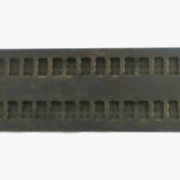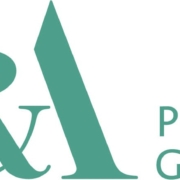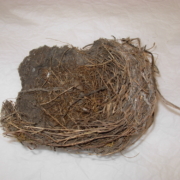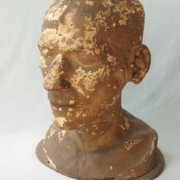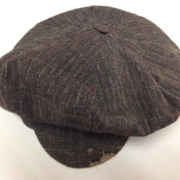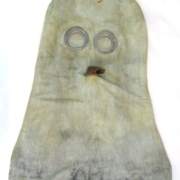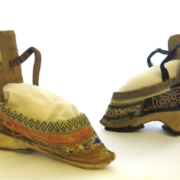Object of the Month – October 2018
October’s Object of the Month is a Roman wine strainer chosen by Carolyn Wingfield, Curator
An Essential Accessory for Wine Drinkers
This fragile bronze vessel was described as a “Roman Bronze colander – origin unknown” in the Museum’s registers when it was acquired in 1927. It was among a list of diverse archaeological, historical and ethnographic objects given by George Morris of The Friends’ School, Saffron Walden. It measures nearly 15cms in diameter and the tiny holes piercing the central bowl form a delicate pattern.
Too delicate to be a colander, it is more accurately described as a wine strainer, which would have been used to filter sediment from wine. It is of fine workmanship, though a little damaged and has in the past been repaired with plastic mesh to support the paper-thin edges where some pieces are missing. The handle is also largely missing, although the end adjoining the pan is visible, repaired in the past with modern solder.
We can now place this wine strainer in context, thanks to finds of similar vessels, often accompanying small Roman bronze saucepans know as trullei (singular, trulleus). Trullei were part of the standard equipment of Roman legionaries, but wine strainers were not everyday items issued to Roman troops, and strainers like ours could have been made in Britain. There are examples of strainers been buried with trullei or bronze bowls, for instance the Kingdtone Deverell hoard, discovered in 2005 and now in Salisbury Museum, and the Langstone hoard from Newport, Wales, found in 2007. The Langstone hoard may have been a ritual deposit made by Britons, but elsewhere, strainers and bronze vessels have been found in graves, as part of the feasting and drinking equipment which accompanied the social elite of late Iron Age and early Roman Britain to the next world.
Certainly at the top of Iron Age society in the Essex region, there were people enjoying wine imported from the Roman world as much as a century before the Claudian invasion of AD 43. We know this from high-status graves where wine amphorae were buried, and you can see examples of such amphorae in Saffron Walden Museum. So our wine strainer could date to around the 1st century AD, either just before or after the Roman conquest. It is a pity that we do not know where it was found, but we can imagine a local British aristocrat using this as part of a wine-drinking ceremony or special feast.
Cheers!
 The wine strainer is on display at the Museum until 1st November 2018, where you can learn more about this object and life in Roman times.
The wine strainer is on display at the Museum until 1st November 2018, where you can learn more about this object and life in Roman times.


